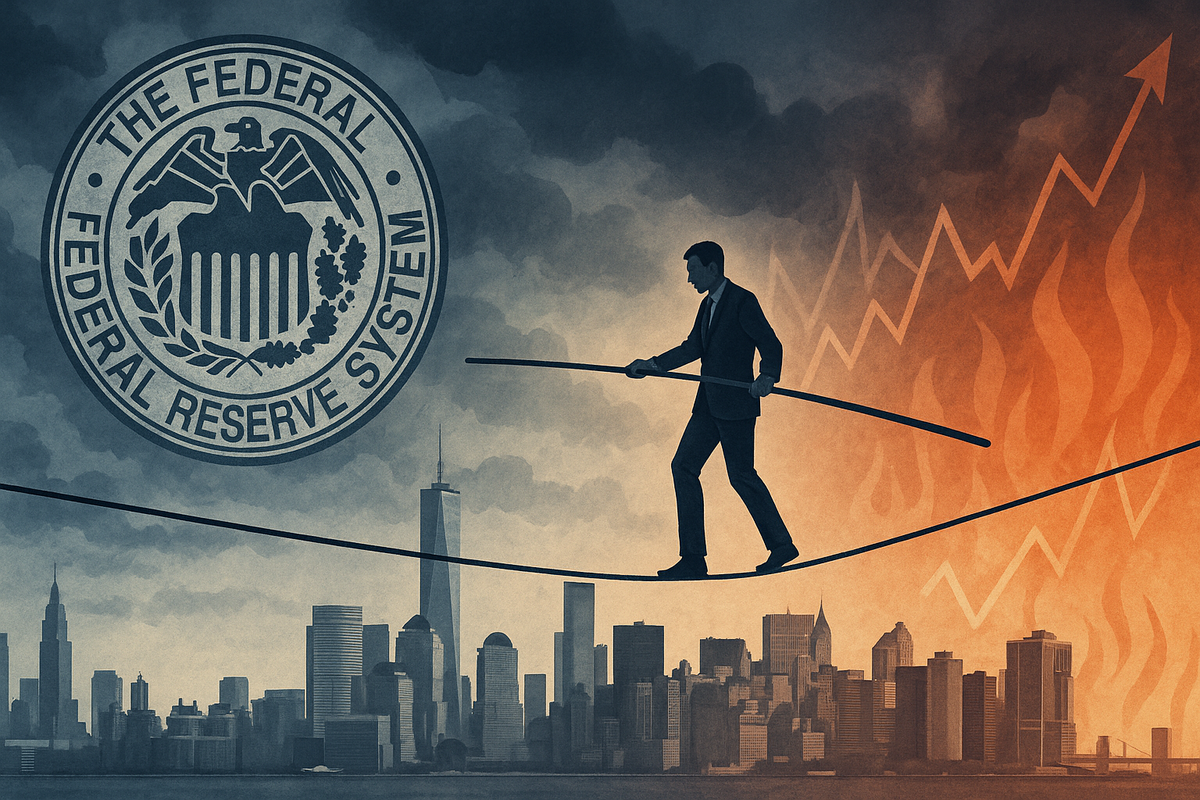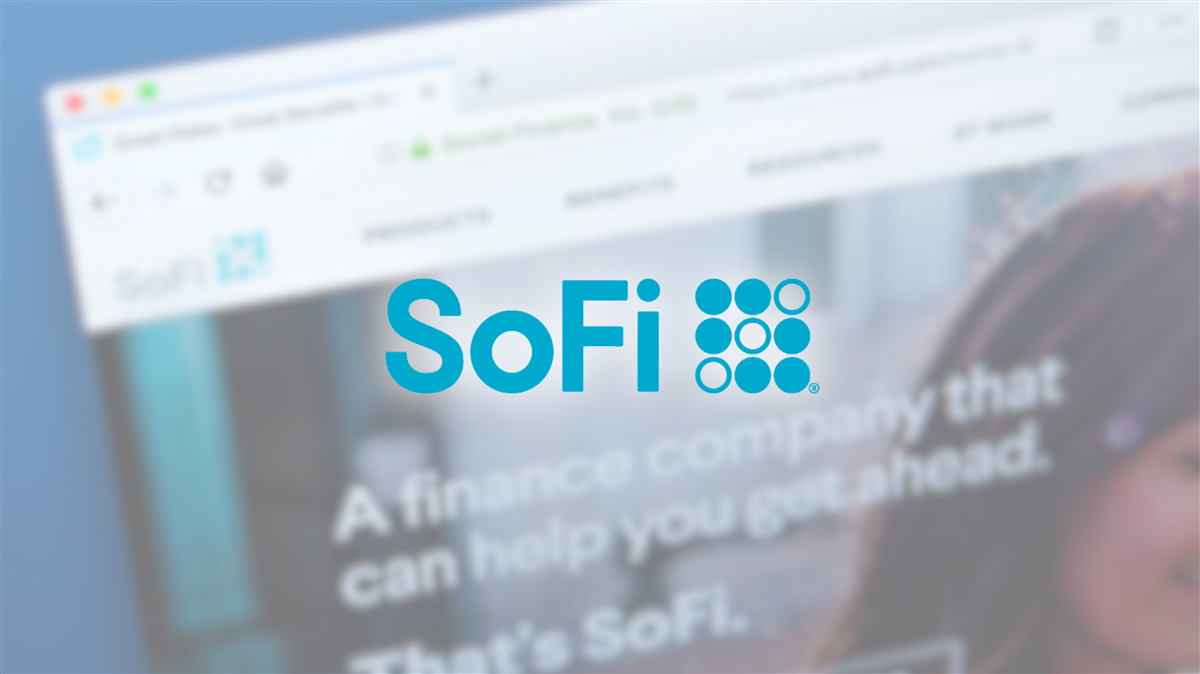
The financial markets are abuzz with the strong expectation of a Federal Reserve interest rate cut in September 2025. This anticipated shift in monetary policy is primarily driven by a discernible softening in the U.S. labor market, which has shown signs of cooling after a period of robust growth. However, the path forward remains fraught with uncertainty, as persistent inflation concerns continue to cast a long shadow over the Fed's decision-making process.
Fed Chair Jerome Powell's recent cautious comments have further fueled speculation, signaling a potential pivot while simultaneously emphasizing the central bank's commitment to data dependency and a careful approach. This delicate balancing act highlights the complex economic landscape the Fed navigates, aiming to achieve both maximum employment and price stability in an environment where these goals often appear to be in tension.
The Shifting Sands of Monetary Policy: Why a September Cut Matters
The widespread expectation of a 25-basis-point reduction in the federal funds rate at the September 2025 Federal Open Market Committee (FOMC) meeting has become a dominant narrative in financial circles. This sentiment gained significant traction following Fed Chair Jerome Powell's address at the Jackson Hole Economic Symposium in August 2025, where he hinted at a potential adjustment to the Fed's policy stance. Market analysts and investors are now pricing in a high probability, often exceeding 80-90%, for such a move.
The primary catalyst for this anticipated rate cut is the undeniable weakening of the U.S. labor market. Monthly job creation has slowed considerably throughout 2025, averaging a modest 35,000 jobs over the past three months, a stark contrast to the 168,000 per month observed in 2024. The July 2025 nonfarm payrolls report, for instance, indicated an addition of only 73,000 jobs. Concurrently, the unemployment rate has seen a moderate increase, reaching 4.2% in July 2025, up from 4.1% in June, with forecasts suggesting it could climb to 4.3% by the end of the current quarter. Furthermore, the labor force participation rate dipped to 62.2% in July, its lowest level since November 2022. Powell himself described the labor market as being in a "curious kind of balance," characterized by a significant slowdown in both the supply of and demand for workers, suggesting increasing downside risks to employment. Downward revisions to previous payroll reports for May and June have further underscored this weakening trend.
In his Jackson Hole address, Powell indicated that "the baseline outlook and the shifting balance of risks may warrant adjusting our policy stance," explicitly acknowledging the growing risks to the job market. He reiterated the Fed's dual mandate of achieving maximum employment and price stability, noting that when these goals are in tension, the framework necessitates balancing both sides. While opening the door to a rate cut, Powell maintained a cautious tone, stopping short of a definitive commitment and emphasizing the Fed's commitment to "proceed carefully" and remain "data-dependent." He also highlighted a "challenging situation" where "risks to inflation are tilted to the upside, and risks to employment to the downside."
Despite the strong expectation for a September cut, significant uncertainty persists regarding the subsequent pace and extent of future rate reductions. Inflation remains stubbornly above the Fed's 2% target, with Core Personal Consumption Expenditures (PCE) prices rising 2.9% over the 12 months ending in July, and overall PCE prices at 2.6%. The core Consumer Price Index (CPI) is also hovering around 3%. Powell acknowledged that President Donald Trump's tariffs are visibly pushing up consumer prices, with effects expected to accumulate, though he suggested these might be a "short-lived—a one-time shift in the price level" rather than a persistent inflationary dynamic. Policymaker disagreement also exists, with some expressing concerns about inflation persistence, potentially leading to dissenting votes against rate cuts. The Fed's future decisions will heavily rely on incoming economic data, particularly the August jobs report (due September 5) and subsequent reports on consumer and producer prices.
Initial market reactions to Powell's signals were largely positive. Following his Jackson Hole speech, U.S. stock prices surged, with the Dow Jones Industrial Average (DJIA) reaching a new all-time high, and the S&P 500 (SPX) and Nasdaq Composite (IXIC) also experiencing significant gains. Bond futures traders rapidly increased the perceived probability of a September rate cut, with odds jumping from around 70-75% to nearly 90%. The yield on the 10-year Treasury and the two-year note both fell in response. However, some of the initial optimism slightly waned in the subsequent trading days, reflecting the ongoing uncertainty.
Navigating the Currents: Winners and Losers in a Shifting Landscape
A Federal Reserve rate cut, while generally seen as a boon for the broader economy, will undoubtedly create a distinct set of winners and losers among public companies. The impact will ripple across various sectors, favoring those sensitive to borrowing costs and consumer spending, while potentially posing challenges for others.
Companies poised to benefit from a rate cut are primarily those with significant debt loads or those heavily reliant on consumer financing. Real estate investment trusts (REITs), such as Prologis (NYSE: PLD) and Simon Property Group (NYSE: SPG), often carry substantial debt to finance their property portfolios. Lower interest rates translate directly into reduced borrowing costs, improving their profitability and making new acquisitions more attractive. Similarly, homebuilders like D.R. Horton (NYSE: DHI) and Lennar Corporation (NYSE: LEN) stand to gain as lower mortgage rates make homeownership more affordable, stimulating demand and boosting sales. The automotive industry, including manufacturers like General Motors (NYSE: GM) and Ford Motor Company (NYSE: F), could also see increased sales as car loans become cheaper, encouraging consumers to purchase new vehicles.
Furthermore, growth-oriented technology companies that often rely on venture capital and debt financing for expansion, such as NVIDIA (NASDAQ: NVDA) and Tesla (NASDAQ: TSLA), could find it easier and cheaper to raise capital, fueling further innovation and market expansion. Lower interest rates also tend to make future earnings streams more valuable in present-day valuations, which can be particularly beneficial for companies with high growth potential. Consumer discretionary companies, including retailers like Amazon (NASDAQ: AMZN) and Target (NYSE: TGT), could experience a boost as consumers, with potentially lower debt burdens and increased confidence, are more inclined to spend on non-essential goods and services.
Conversely, companies that might face headwinds from a rate cut are primarily those in the financial sector, particularly banks. While lower rates can stimulate lending activity, they also tend to compress net interest margins (NIMs), the difference between what banks earn on loans and what they pay on deposits. Large commercial banks like JPMorgan Chase (NYSE: JPM) and Bank of America (NYSE: BAC) could see their profitability squeezed if the spread between their lending and borrowing rates narrows significantly. Additionally, insurance companies, such as Berkshire Hathaway (NYSE: BRK.A), which often invest their premiums in fixed-income securities, might see lower returns on their investments in a declining interest rate environment.
Finally, companies with strong balance sheets and minimal debt might not experience the same uplift as their more leveraged counterparts. While they are less exposed to rising interest rates, they also don't benefit as much from falling rates. Investors might shift their focus towards higher-growth, more rate-sensitive sectors, potentially leading to a relative underperformance for these more stable, but less dynamic, companies.
Broader Implications: A Shifting Economic Landscape
The Federal Reserve's anticipated rate cut in September 2025 is not an isolated event but rather a significant development within broader industry trends, signaling a potential shift in the economic cycle. This move reflects a central bank grappling with the delicate balance between taming inflation and supporting economic growth, particularly as the labor market shows signs of cooling.
This event fits into a broader trend of central banks globally navigating post-pandemic economic complexities. Many developed nations have faced similar challenges of elevated inflation and the need to adjust monetary policy. The Fed's decision could set a precedent or influence the actions of other central banks, potentially leading to a more synchronized global easing cycle if economic conditions warrant. The ripple effects on competitors and partners will be substantial. For instance, companies that rely on international trade could see shifts in currency valuations, impacting their import and export costs. A weaker dollar, often a consequence of lower interest rates, could make U.S. exports more competitive but imports more expensive.
Regulatory and policy implications are also noteworthy. A rate cut could be seen as a validation of the Fed's data-dependent approach, but it also opens the door to scrutiny regarding the timing and magnitude of future cuts. Policymakers will be closely watching how the economy responds, and any unexpected resurgence of inflation could lead to calls for a more hawkish stance. Furthermore, the political landscape, particularly with the upcoming presidential election, could influence market sentiment and the Fed's perceived independence. President Trump's tariffs, which Powell acknowledged are pushing up consumer prices, add another layer of complexity, creating a unique challenge for the Fed in distinguishing between supply-side inflation and demand-driven price pressures.
Historically, periods of rate cuts have often followed periods of economic slowdown or recession, serving as a tool to stimulate growth. However, the current situation is unique, with persistent inflation coexisting with a softening labor market. This presents a challenge that differs from previous cycles, such as the dot-com bust or the 2008 financial crisis, where inflation was less of a concern during periods of easing. Comparisons to the "soft landing" scenarios of the mid-1990s are being drawn, where the Fed successfully navigated a period of inflation without triggering a recession. However, the current inflationary pressures, exacerbated by global supply chain issues and geopolitical tensions, make this a more precarious tightrope walk.
What Comes Next: Navigating the Uncharted Waters
The anticipated September 2025 rate cut marks a pivotal moment for the Federal Reserve and the broader economy, ushering in a period of both short-term adjustments and long-term strategic considerations. In the immediate aftermath, markets will be keenly focused on the Fed's forward guidance, seeking clues about the pace and extent of future rate reductions. Any deviation from market expectations, either more aggressive or more cautious, could trigger significant volatility across asset classes.
In the short term, businesses will need to assess their capital structures and investment plans. Companies with floating-rate debt will see immediate relief in their interest payments, potentially freeing up capital for reinvestment or debt reduction. Conversely, financial institutions will need to adapt to potentially narrower net interest margins, possibly by exploring new revenue streams or optimizing their cost structures. Consumers, too, will feel the impact, with lower borrowing costs for mortgages, car loans, and credit cards, which could stimulate spending and investment.
Looking further ahead, the long-term possibilities are more varied. If the Fed successfully engineers a "soft landing," where inflation moderates without a significant economic downturn, it could pave the way for sustained growth. However, if inflation proves more persistent than anticipated, or if the labor market deteriorates more rapidly, the Fed could be forced to reverse course, leading to renewed economic uncertainty. Potential strategic pivots or adaptations will be crucial for companies. Those in rate-sensitive sectors, such as real estate and automotive, may need to adjust their pricing strategies and production levels to capitalize on increased demand. Technology companies, with their reliance on capital for innovation, could find a more favorable funding environment.
Market opportunities or challenges will emerge depending on the economic trajectory. Investors will be looking for sectors and companies that are best positioned to thrive in a lower interest rate environment, potentially favoring growth stocks over value stocks. Conversely, sectors that benefit from higher rates, such as certain parts of the financial industry, might face ongoing challenges. Potential scenarios and outcomes range from a smooth transition to a more accommodative monetary policy, leading to a sustained economic expansion, to a more turbulent path characterized by continued inflation battles and potential economic slowdowns. The Fed's ability to communicate its intentions clearly and to remain agile in its response to incoming data will be paramount in shaping these outcomes.
Conclusion: A Delicate Balance and a Watchful Eye
The Federal Reserve's anticipated rate cut in September 2025 represents a critical juncture in the ongoing effort to balance economic growth with price stability. The key takeaway is that the Fed is responding to a softening labor market, acknowledging the increasing risks to employment, while simultaneously grappling with persistent inflation concerns. This delicate tightrope walk underscores the complexity of the current economic environment, where traditional monetary policy tools must be applied with precision and adaptability.
Moving forward, the market will remain highly sensitive to incoming economic data, particularly reports on inflation and employment. Investors should watch for any signs of a significant acceleration or deceleration in these key indicators, as they will heavily influence the Fed's future decisions regarding the pace and extent of further rate adjustments. The August jobs report, due in early September, will be a particularly crucial data point, providing further insight into the health of the labor market.
The lasting impact of this policy shift will depend on several factors, including the trajectory of inflation, the resilience of the labor market, and the broader global economic landscape. While a rate cut is generally seen as supportive of economic activity, the lingering inflationary pressures and geopolitical uncertainties mean that the path ahead is far from clear. Companies and investors alike will need to remain agile, adapting their strategies to a dynamic environment where the Fed's actions will continue to be a primary driver of market sentiment and economic performance. The coming months will undoubtedly be a period of close observation and strategic recalibration for all stakeholders in the financial markets.


















